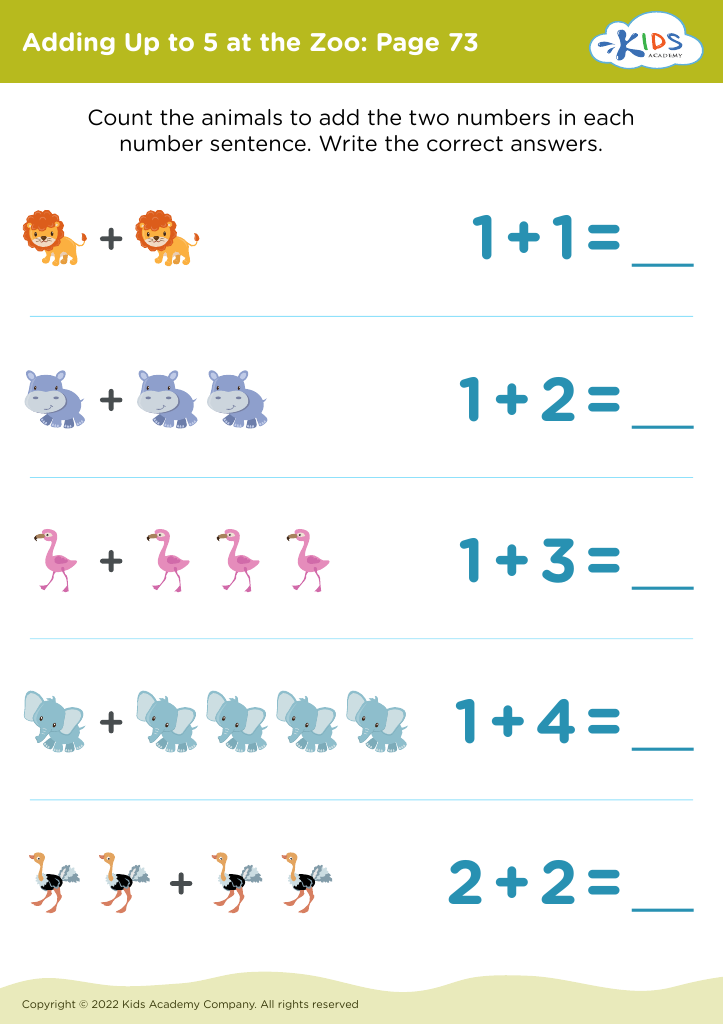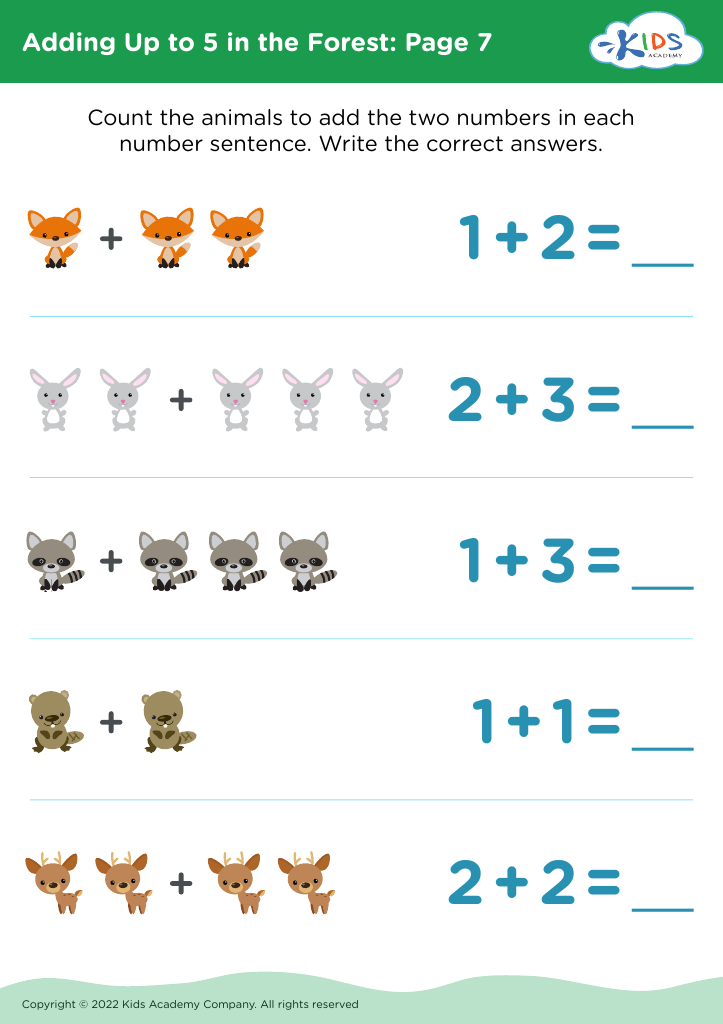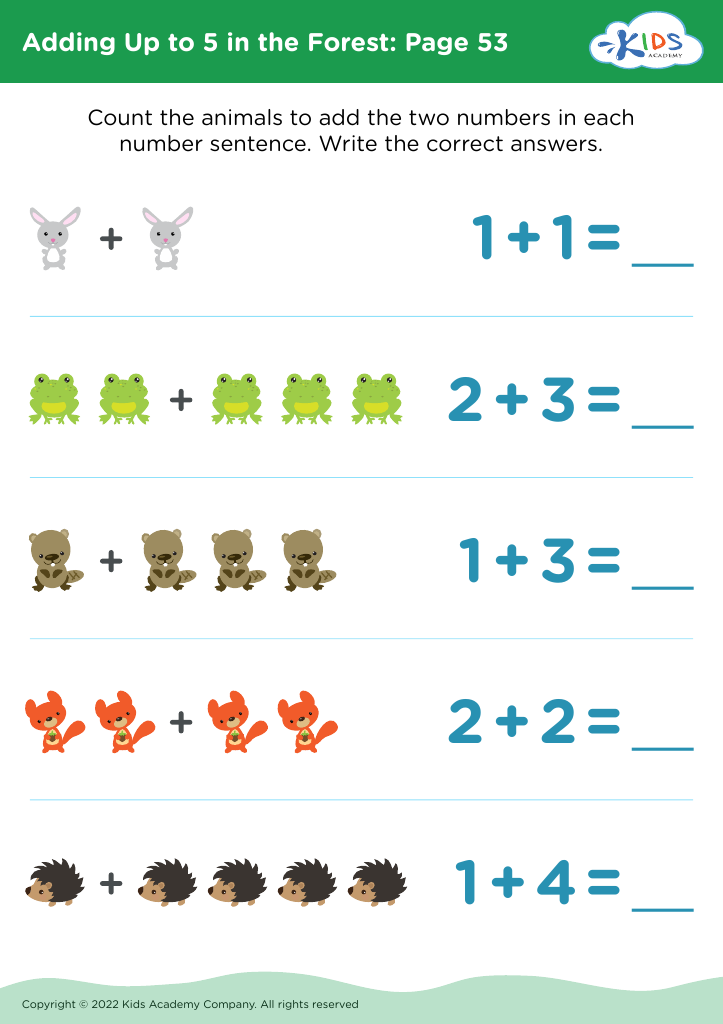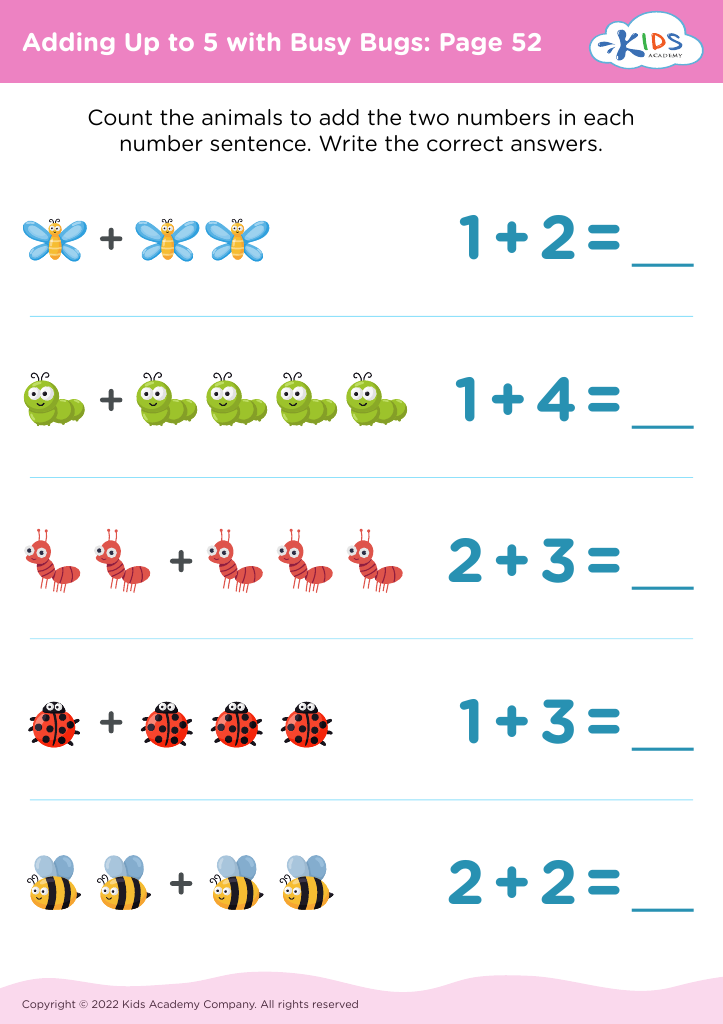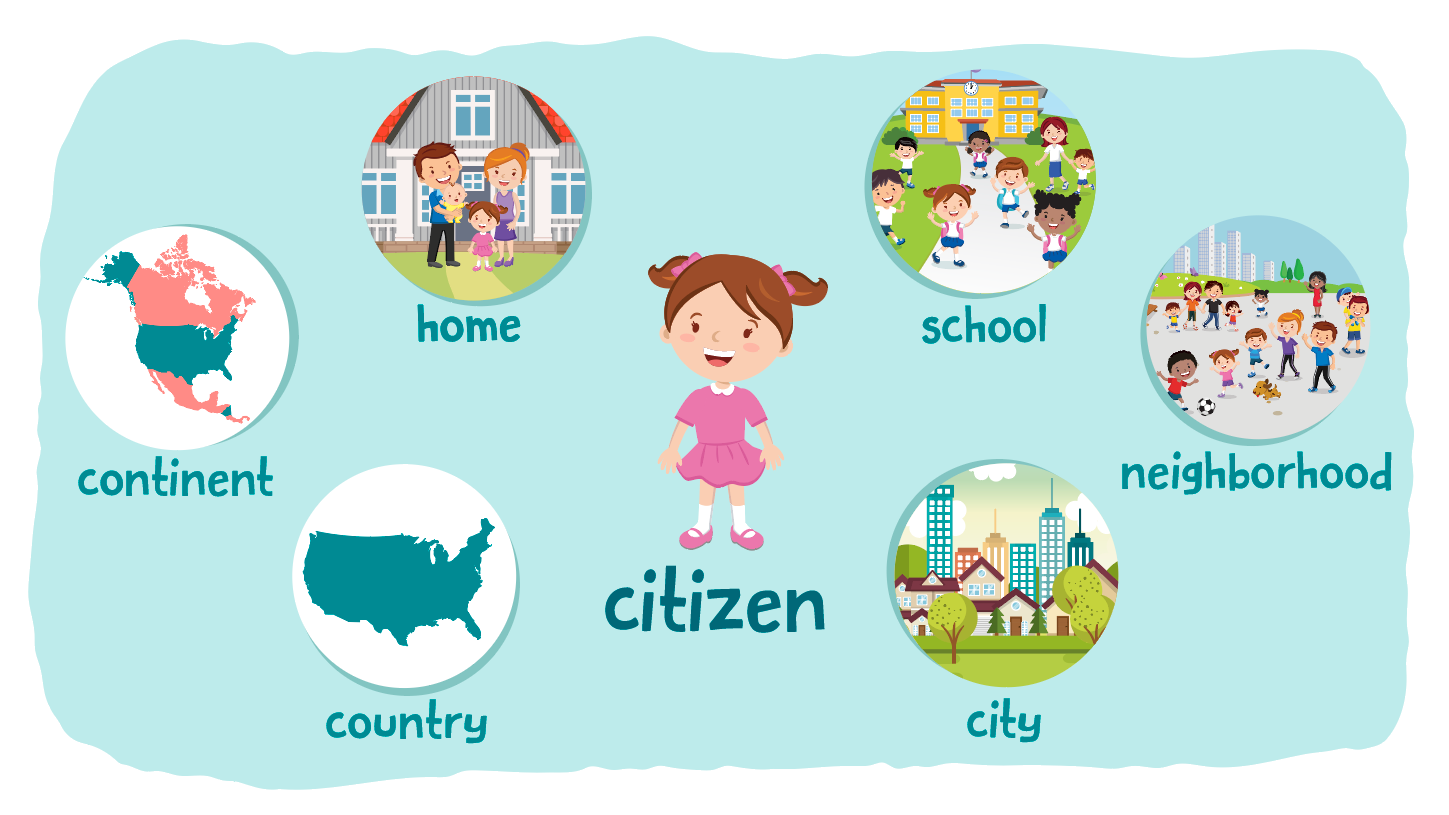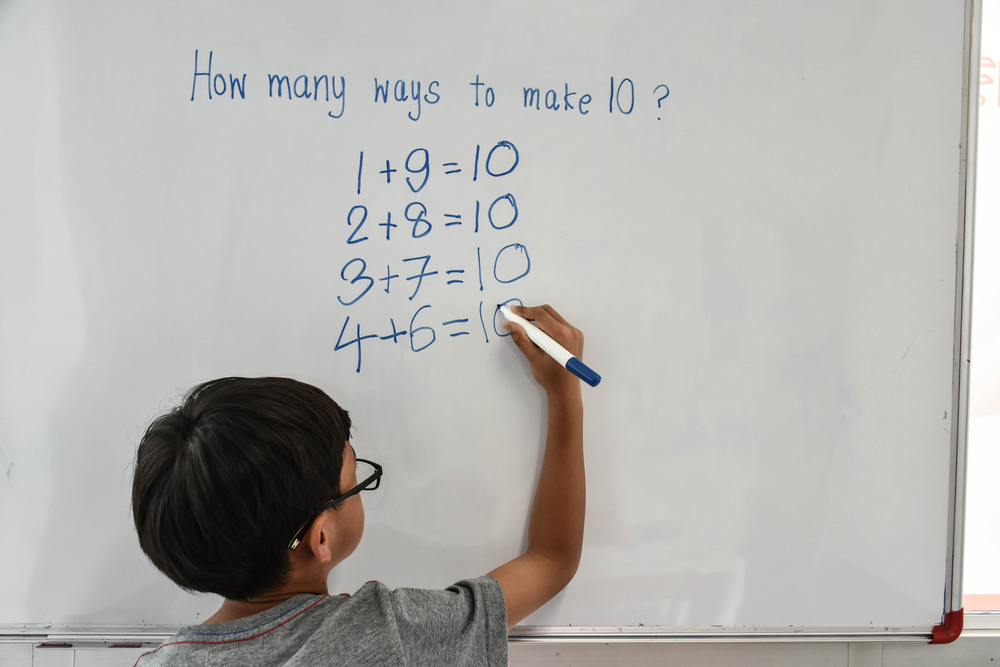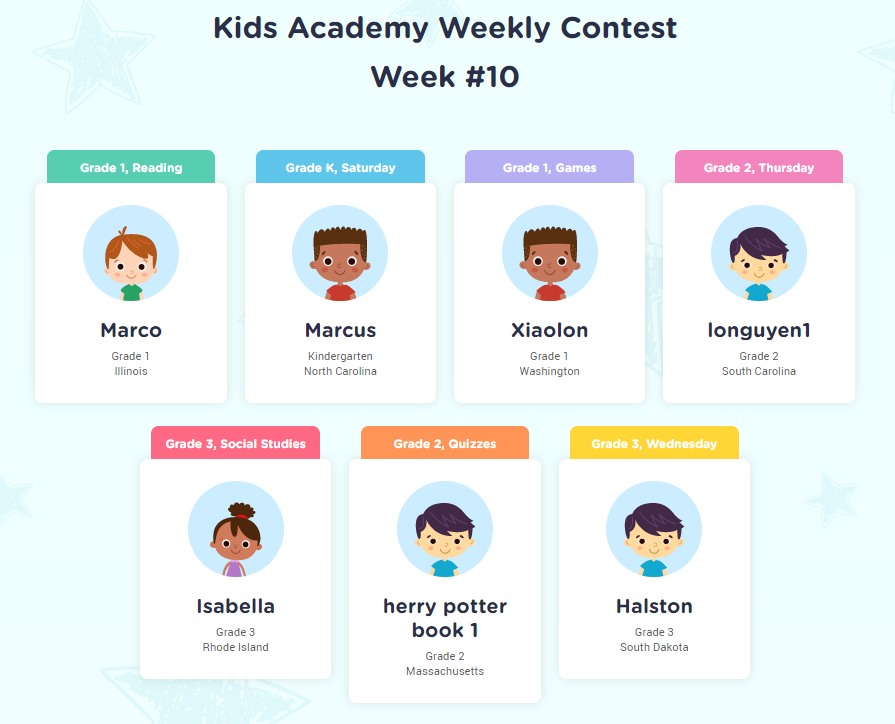Visual comprehension Worksheets for Ages 5-8
11 filtered results
-
From - To
Enhance your child’s learning journey with our engaging Visual Comprehension Worksheets for kids aged 5-8! Designed to improve critical thinking and observational skills, these worksheets challenge young learners to analyze images, identify patterns, and interpret visual information. Our colorful and interactive activities cater to various learning styles, ensuring that your child remains excited and invested in their education. From fun puzzles to captivating story sequencing tasks, these resources support reading comprehension and cognitive development. Perfect for home schooling or classroom settings, our worksheets make visual learning enjoyable and effective. Explore the world of visual literacy and boost your child’s confidence today!
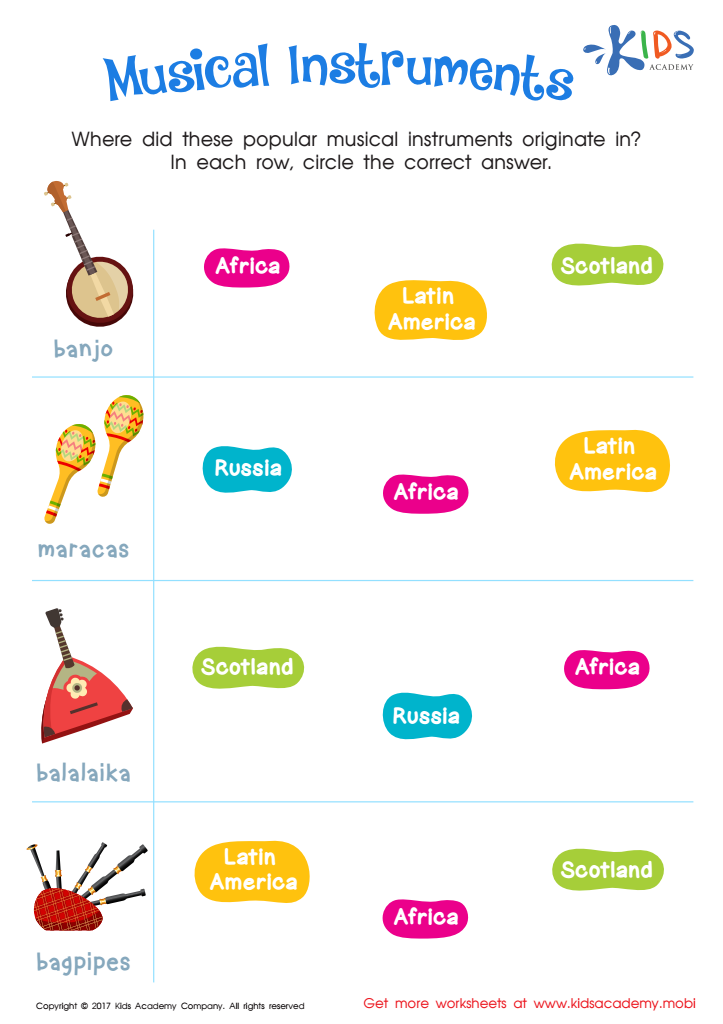

Musical Instruments Printable
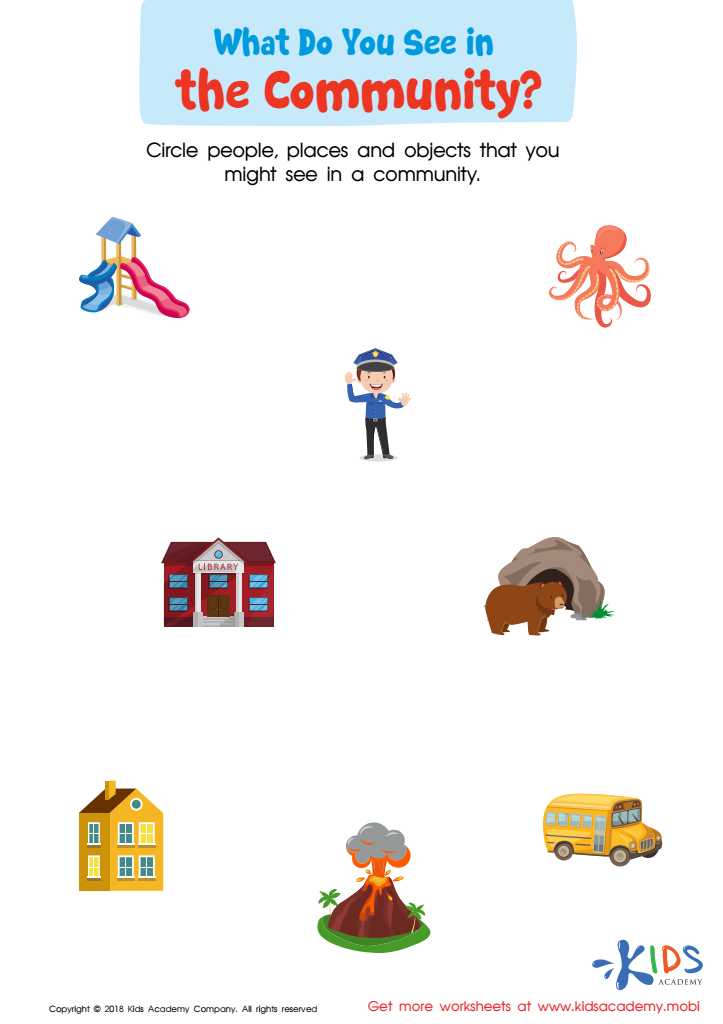

What Do You See in the Community Worksheet
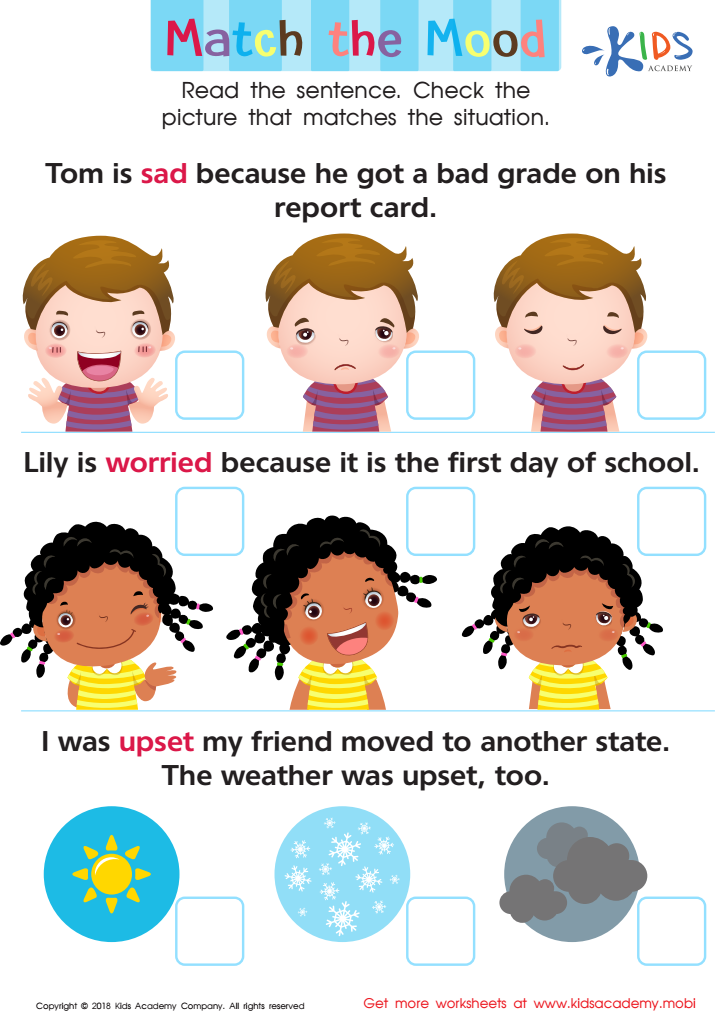

Match The Mood Worksheet
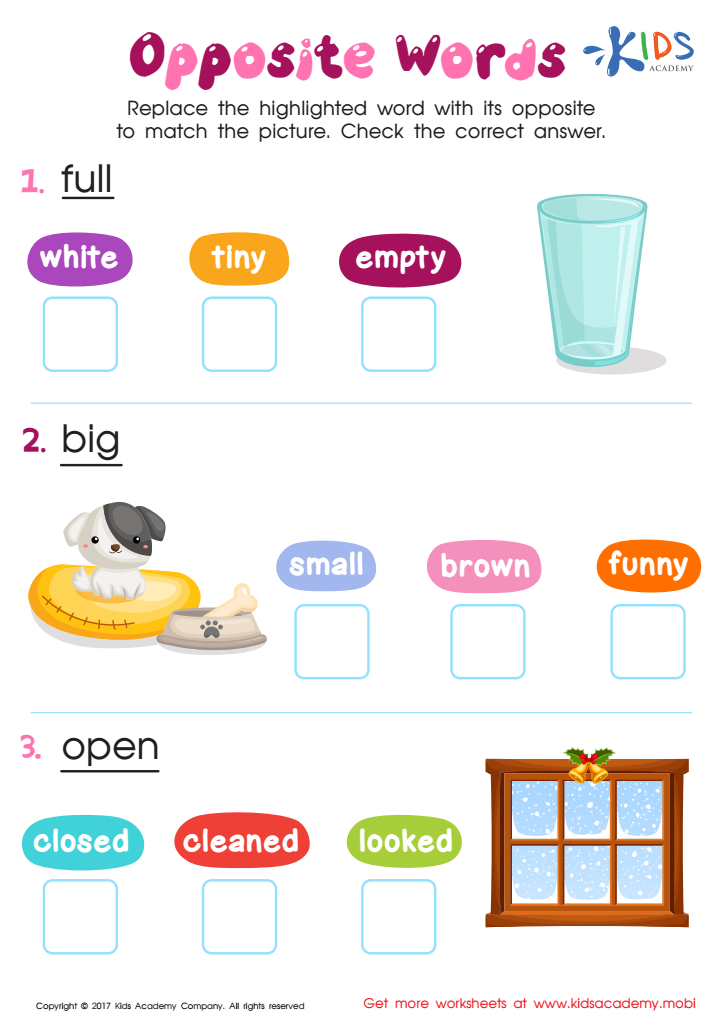

Opposite Words Worksheet
Visual comprehension is crucial for children aged 5-8, as it forms the foundation for their overall learning and cognitive development. At this stage, children are exposed to various forms of visual information, from books and educational materials to digital content. Parents and teachers should care about visual comprehension because it enhances children's ability to understand and interpret the world around them.
Strong visual comprehension skills enable young learners to decipher images, charts, and diagrams, linking visual elements with text and promoting better comprehension of narratives and concepts. This skill also plays a pivotal role in developing critical thinking and problem-solving abilities, as children learn to analyze and draw conclusions from what they see.
Furthermore, fostering visual comprehension can support emotional and social development. Children who can better understand visual cues in their environment—such as facial expressions in pictures—are more adept at relating to others and empathizing.
Incorporating activities that promote visual comprehension, such as storytelling with pictures, art projects, or interactive games, aids in building these essential skills. Parents and teachers should prioritize this area of development to ensure children thrive academically and socially, laying the groundwork for lifelong learning.
 Assign to My Students
Assign to My Students

